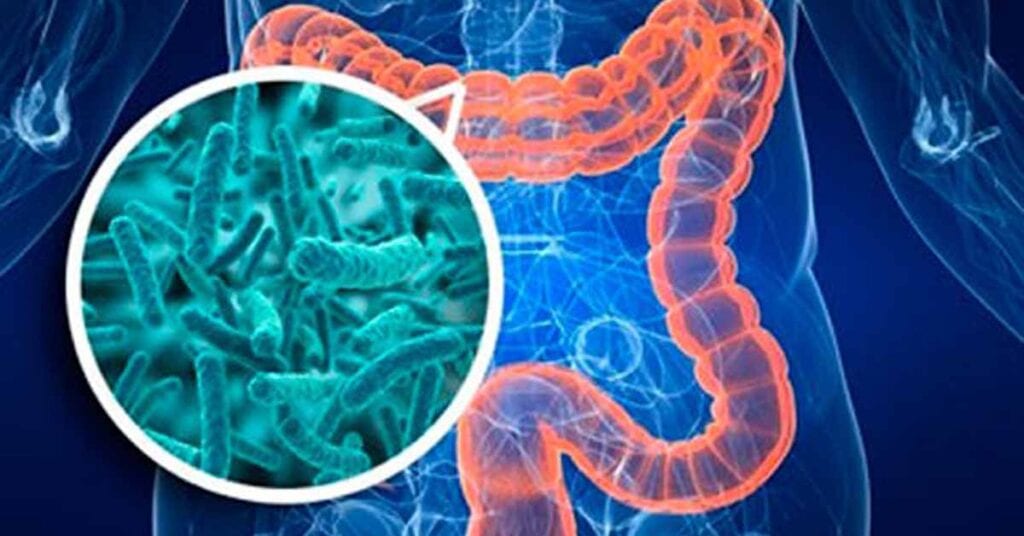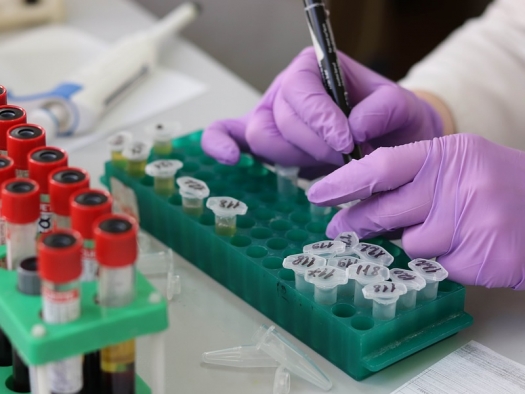How Glyphosate Poisoning Explains the Peculiarities of the Autism Gut

In May of 2018 I had the opportunity to attend the AutismOne conference in Chicago, Illinois. As in previous years, it was an exciting event where many experts, mostly alternative medicine practitioners, gave impassioned presentations offering their latest insights into various features of autism or biometrics linked to autism or treatment programs that they found to be beneficial. As in the past, I came away with increased optimism that we might finally solve the autism puzzle, along with many new leads on research topics that I needed to dig into more thoroughly, and renewed hope that autism can in fact be reversed.
One talk in particular really grabbed my attention, a presentation by Dr. Arthur Krigsman providing a detailed depiction of the distinct pathology that characterizes the autism gut. I took copious notes, and I was thrilled to see how well his observations matched my predictions in terms of how glyphosate could be predicted to affect the gut. Glyphosateis the active ingredient in the pervasive herbicide Roundup. It is used extensively on the core Roundup Ready crops of the processed food industry — corn, soy, canola, sugar beets – and also sprayed on many other common crops right before harvest as a desiccant or ripener — wheat, oats, legumes, sugar cane, etc. The United States government has not considered it to be necessary to test for the levels of glyphosate in food, because they consider it to be nontoxic to humans. An ever increasing body of research by independent scientists, however, has proven otherwise. In fact, I now believe that glyphosate is the main factor causing the autism epidemic.
Myosin and the Gut

Dr. Krigsman’s findings have been published in the research literature, and two recent publications provide considerable detail about the unique features of the gut dysbiosislinked to autism. In his talk, Dr. Krigsman said that 50% to 80% of autistic children have gut symptoms, and they seem to have a unique form of enterocolitis, characterized by a peculiar kind of constipation that is entirely not due to an obstruction. Their feces can pile up over days or even a week as soft stools that comes out after an accumulation of enough water eventually allows the contents to be flushed as diarrhea. As the feces pile up, their abdomen becomes bloated and tender to the touch. They are often described as experiencing alternating constipation and diarrhea, which seems contradictory at first but makes sense if you describe it this way. He explained it mostly as a motility problem: impaired peristalsis causes the feces to remain stagnant rather than being slowly pushed forward through the radial contractions of smooth muscle cells lining the abdominal wall that propagate in a wave down the tube. All I could think of was that the gut appeared to be paralyzed. Of course, this also leads to the build-up of excessive bacteria in the upper gut feasting on the immobilized feces, explaining a condition linked to autism called Small Intestinal Bacterial Overgrowth (SIBO).
I was very excited when I heard this, because I had been predicting that glyphosate would cause impaired peristalsis, if in fact my theory that it substitutes by mistake for glycine during protein synthesis is correct. I had supportive evidence from a paper describing a case study of a woman who tried to kill herself by drinking a glyphosate-based formulation. She survived the ordeal, but a striking observation by the team who treated her was that her gut became paralyzed.
The protein in the smooth muscle cells lining the gut that is responsible for contraction is called myosin. Myosin molecules typically are assembled from heavy chains and/or light chains, but the type of myosin in smooth muscle cells is made up only of heavy chains. The myosin heavy chain has a highly conserved glycine residue at location 699 in the sequence. Elegant experiments have shown that, if this glycine is replaced by alanine, the protein loses 99% of its ability to contract. Glycine is the simplest amino acid with no side chains. Alanine has just a methyl group as its side chain, and is the amino acid that is most similar to glycine. So this is a very small change, but it has a dramatic effect on the protein’s function.
Glyphosate is also an amino acid, and, in fact, it is a complete glycine molecule except that a hydrogen atom normally attached to the nitrogen atom in glycine has been replaced by a much bulkier methyl phosphonyl group. Substituting glyphosate at location 699 would have a much more dramatic effect, due to the bulky side group as well as its characteristic negative charge. It would almost certainly destroy any ability to contract. In the experiment, they showed that if only 2% of the molecules of myosin in a muscle fiber had alanine in place of glycine, the muscle could only contract to 50% of its normal capacity.
What is even more intriguing is that the gall bladder also depends on myosin to contract in order to release bile acids. Bile acids are essential for the digestion of fats. Bile also acts as a detoxifying surfactant and it has antimicrobial properties. Dr. Krigsman showed many photos illustrating the very pale color of stool samples from autistic children, and he pointed out that this implied low levels of bile acids. I have previously written about defective production of bile acids in the liver due to impairments in cytochrome P450 (CYP) enzymes that are essential for bile synthesis. CYP enzymes all contain a highly conserved short peptide motif FxxGxRxCxG that always has two and often has three glycine residues, with the amino acids indicated as “x” representing wild cards (many different possibilities). Glyphosate’s disruption of CYP enzymes could be due to substituting for glycine in this motif. But the release of bile acids can also be impaired if glyphosate is getting inserted into the myosin molecules in the gall bladder. This would also predictably cause cholestasis and the build-up of gall stones, eventually requiring the gall bladder to be removed.
Another feature that Dr. Krigsman talked about is that the autism stools often contained clear evidence of undigested food particles. This can easily be explained through glyphosate’s expected impact on digestive enzymes, particularly trypsin, pepsin and lipase. Trypsin and pepsin digest proteins, and lipase digests fats. My colleague Anthony Samsel ordered samples of porcine trypsin, pepsin and lipase from a lab and had them tested for glyphosate. All three were found to have high levels of glyphosate contamination. Trypsin has three highly conserved glycine residues that form “glycine hinges,” each of which is critical for trypsin activation. Undigested proteins induce an inflammatory response in the gut that opens up the tight junctions, leading to leaky gut syndrome, and subsequently opening up the brain barrier as well, allowing toxic metabolites to enter the brain and cause a neuroinflammatory response. A recent study has shown that glyphosate disrupts the tight junctions in the gut epithelial wall and opens up the gut barrier.
Dr. Krigsman also said that the older autistic children had evidence of skeletal muscle wasting, particularly their upper arms and upper legs, which were abnormally thin, almost resembling what’s seen in kwashiorkor, the protein malnutrition condition that afflicts starving children in Africa. With an impaired ability to digest food, as seen from the food particles showing up in the stool, the body starts to break down its own muscle tissue as a source of energy, processing glutamate, derived from muscle breakdown, through the citric acid cycle to generate ATP. A study on 18 adults with autism found that they had abnormally high levels of glutamate in their blood, with high statistical significance (p < 0.001). Glutamate is neuroexcitotoxic, and the levels found in the autistic patients were found to correlate with autism severity. The skeletal muscles might also be disturbed by glyphosate poisoning in the same way as the smooth muscles in the gut: myosin is the most common protein in skeletal muscles. This would cause the muscles to be very weak due to an inability of myosin to contract.
Does Glyphosate Substitute for Glycine During Protein Synthesis?

Protein synthesis is a fascinating “manufacturing” process that works by assembling “coding” amino acids like beads on a string, according to the famous four-letter DNA code (AGCT). Each three letter sequence codes for a particular amino acid, choosing among 20 or so options. The amino acids “join hands” like paper dolls through peptide bonds. When the synthesis machinery sees “GGC,” for example, it “knows” to look for a glycine unit. Glyphosate is a complete glycine molecule with an extra attachment on the nitrogen atom, which the matching program could overlook because it sits outside of the pocket where glycine fits snugly. Protein synthesis is inherently an errorful process, and the strategy is to fully assemble the protein, let it go through its sophisticated folding process, and then discard it if it appears to be defective once completed.
If it can be proven that glyphosate substitutes by mistake for glycine during protein synthesis, it is “game over” for glyphosate. Anthony Samsel suggested to me that this might be happening in December of 2015, and we published our first paper on this idea the following March. I have since published several other papers, together with colleagues, showing how this concept can elegantly explain the disease process in multiple diseases and conditions whose rate is rising alarmingly in the past two decades. These include diabetes and obesity, Alzheimer’s disease, autism and multiple sclerosis, amyotrophic lateral sclerosis (ALS), anencephaly (child born with a missing cerebral cortex), and Mesoamerican Nephropathy, the life-threatening kidney disease that is now rampant among sugar cane workers in Nicaragua and El Salvador. In each case, specific proteins whose defective function is linked to the disease are shown to have strong glycine dependencies that would lead to dysfunction if glyphosate substitutes for these critical glycine residues.
Glyphosate is not unique in its property as an analogue of a coding amino acid. Actually, there are several naturally produced amino acids that are insidiously cumulatively toxic like glyphosate, that work their destruction through substitution by mistake in place of a specific coding amino acid. You can read more about these other toxins in several of the papers mentioned above and the references therein. They cause debilitating diseases like ALS and multiple sclerosis. In fact, glufosinate is a natural non-coding amino acid analogue of glutamate, and it is used as an herbicide that is gaining popularity now that so many weeds are becoming resistant to glyphosate. As the use of glufosinate accelerates, we can expect to see a growing incidence of a new list of currently unidentified diseases and conditions that will be due to disruption of critical highly conserved glutamate residues in various proteins.
It is a straightforward process to search the research literature looking for highly conserved regions of specific proteins where glycines are absolutely required for proper protein function, similar to the situation with myosin as described above. Again and again, you find that displacement of these glycine residues with glyphosate, a bulkier and negatively charged molecule, can explain the pathology of a specific disease or condition that is currently on the rise.
Most people are inclined to believe that this can’t possibly be true, since glyphosate has been on the market for such a long time and we are repeatedly assured by governmental regulators that it is perfectly safe for human consumption. The highly significant correlations between the rise in glyphosate usage on core crops and the rise in a long list of debilitating neurological and autoimmune disorders are often dismissed with the convenient adage, “correlation does not necessarily mean causation.” Yet there is no other chemical being used in agriculture today that comes anywhere close to matching as well as glyphosate does. The fact is that all these diseases are alarmingly on the rise, and, I would rather ask the question, “If not glyphosate, what?”
Much of the Research has already been Done
It is widely acknowledged that some if not much of glyphosate’s toxicity comes from its property as an amino acid analogue of glycine. For example, it is known that glyphosate excites NMDA receptors, probably by mimicking glycine, which normally binds to and excites these receptors. But most experts are assuring us that it is not possible that it could actually substitute for glycine during protein assembly. However, such a substitution within the protein EPSP synthase is by far the most plausible explanation for how it disrupts this critical enzyme in the shikimate pathway in plants. Disruption of this enzyme is acknowledged by Monsanto as being the most damaging effect that it has on weeds.
A paper from 2006 by T. Funke et al. is very revealing in this respect. This paper discusses the mutation in the DNA code for EPSP synthase in the microbe whose mutated code was inserted into genetically modified plants in order to afford resistance to glyphosate. The modification is very simple: it results in a substitution of alanine for glycine at residue 100 in the protein sequence. Glycine is the simplest amino acid, with no side chain. Alanine is the amino acid that is closest to glycine, and therefore the least disruptive change. It has a methyl side chain. Residue 100 is situated within a very important amino acid sequence that folds into a shape that creates a pocket where the substrate phosphoenol pyruvate (PEP) fits snugly. The currently held belief as to how glyphosate disrupts this protein is that it fits snugly into the pocket as well, displacing PEP. However, a much more plausible explanation is that it displaces glycine at residue 100, and its extra methylphosphonyl group then protudes into the space where PEP should fit, preventing it from entering the pocket.
Alanine also disrupts the fit of PEP, causing a significant reduction in enzyme activity. But it affords remarkable protection from glyphosate poisoning, up until very high concentrations. The obvious reason for this is that it has changed the DNA code so that it no longer recognizes glycine, and therefore also no longer recognizes glyphosate. Funke et al. were particularly surprised that glyphosate stood out as having a much more damaging effect on the activity of EPSP synthase compared to all the other molecules that were tested. They wrote: “More than 1,000 analogs of glyphosate have been produced and tested for inhibition of EPSP synthase, but minor structural alterations typically resulted in dramatically reduced potency, and no compound superior to glyphosate was identified.” This is because glyphosate is the only one among these modified molecules that is an amino acid, and can therefore be inserted into the peptide sequence during protein synthesis.
Strong evidence of a very different sort supporting glyphosate incorporation into proteins comes from a paper where rabbits were exposed to glyphosate directly applied to their eyes. After a period of time, the rabbits were sacrificed and their retinas were analyzed to determine the distribution of different types of folded proteins. Remarkably, glyphosate at the two highest concentrations caused a marked reduction of the percentage of the proteins in the eyes that folded into alpha helices, and a corresponding increase in the percentage that folded as beta sheets. A sharp fold referred to as a “beta turn” was also reduced in the glyphosate-exposed retinas. Multiple studies on the roles of glycine residues in proteins have shown that glycines are crucial for maintaining the stability of alpha helices, and glycine residues are also commonly found at sharp bends because it has no side chains and therefore affords flexibility. So it can be anticipated that glyphosate substitution for such critical glycine residues would cause proteins that should fold into alpha helices to instead misfold into beta sheets.
It has been demonstrated that amyloid beta, the protein that misfolds in association with Alzheimer’s disease, has a highly conserved motif in its transmembrane segment, containing a GxxxGxxxGxxxG pattern (four highly conserved glycines regular spaced by “wild cards”). It has been discovered that this transmembrane alpha helix misfolds into a water-soluble beta sheet that eventually precipitates out as the fibrils that build up in the Alzheimer’s brain. Such misfolding can easily be expected if glyphosate substitutes for glycine within this motif. Amyloid beta is also present in the retina, and its misfolding there is linked to macular degeneration. Macular degeneration is one of the most common causes of blindness, and it affects nearly 50 million people worldwide.
Finally, a completely different type of experiment involving radiolabelled glyphosate has provided strong evidence that glyphosate is incorporating into proteins, and such an experiment was carried out by Monsanto researchers in an unpublished report from 1989. Anthony Samsel gained access to this report through the Freedom of Information Act, and we summarized its findings in our Glyphosate VI paper on amyloidoses and autoimmune neurological diseases. These authors exposed bluegill sunfish to radiolabelled glyphosate and then measured the amount of radiolabel in various tissue samples. They also measured for glyphosate using standard techniques, and they found that the amount of glyphosate detected fell far short of the total radiolabel, accounting for only up to 20% of the radioactive carbon present in the tissue sample. They then got the idea to apply enzymes (proteinase K) to the sample, in order to break down the protein into individual amino acids, and after this the amount of glyphosate detected rose to 70% of the radiolabel. They wrote: “Proteinase K hydrolyses proteins to amino acids and small oligopeptides, suggesting that a significant portion of the 14C activity residing in the bluegill sunfish tissue was tightly associated with or INCORPORATED INTO protein.” (emphasis added). This comes extremely close to admitting that glyphosate incorporates into proteins by mistake in place of glycine during protein synthesis.
It is also worth noting that this means that any foods containing significant amounts of protein will likely have hidden glyphosate contamination that will be missed if the food is not subjected to significant proteolysis prior to measurement. And even after proteolysis there was still a stubborn 30% of the radiolabel that remained undetected, suggesting that glyphosate makes proteins difficult to break down, which is not surprising to me, but is also ominous in terms of the build-up of amyloid beta plaque in association with macular degeneration and Alzheimer’s disease, both of which are rising alarmingly in frequency in the industrialized world.
Conclusion
You have a choice. You can continue to put toxic food on your family’s dinner plate, and wait to see what happens after you have randomly barraged the proteins throughout your body with glyphosate bullets, one by one. Once you or a close family member is diagnosed with a debilitating and painful disease, you can deal with all the medical expenses in a seemingly hopeless quest for recovery. Or you can make a pledge to switch to purchasing only certified organic food when you shop at the grocery story. It is satisfying to me to see the steady growth in the percentage of shelf space devoted to organic foods in grocery stores around the country over the past decade. Your choice to feed your family only organic foods will help to encourage the farmers to grow only organic food, and increased demand will drive down the prices. Together we can create a movement that can reverse the destructive path we are currently on towards a path where sustainable organic agriculture heals the soil as well as the human body. All the other organisms that share this planet with us, such as the bees and the butterflies, will be very grateful that we have finally stopped poisoning them as well.




